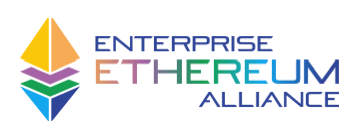Monday 8 July 2024
A new case study showcases the successful implementation of cross-chain Delivery versus Payment (DvP) settlement using EEA DLT Interoperability Specification
The Enterprise Ethereum Alliance (EEA) today released a new case study today demonstrating a successful implementation of its Distributed Ledger Technology (DLT) Interoperability Specification. The Distributed Ledger Technologies Interoperability Case Study highlights a Delivery versus Payment (DvP) settlement process involving multiple DLT networks.
Key highlights of the case study include:
- Successful interoperability between a private permissioned Corda network for securities management and a private permissioned Ethereum network for payments
- Implementation of atomic settlement as per the definition of the Bank of International Settlements, to ensure that the transfer of one asset occurs if and only if the transfer of the other asset also occurs.
- Utilization of the EEA DLT Interoperability Specification to enable secure cross-chain communication
- Collaboration between EEA members and industry leaders HQLAx, Fnality International, Adhara, QualitaX, Wanchain.
This case study represents a significant milestone in the journey toward standard-driven DLT interoperability implementations. It showcases how adherence to the EEA DLT Interoperability Specification can overcome challenges in communication between distinct DLT platforms, facilitating a more integrated global financial system. It offers insights into the benefits of DLT in securities transactions, including real-time settlement, improved efficiency, and reduced counterparty risks.
The full case study is available for download on the EEA website. For more information about the EEA DLT Interoperability Specification and how it can support your organization’s DLT interoperability infrastructure, please visit entethalliance.org
